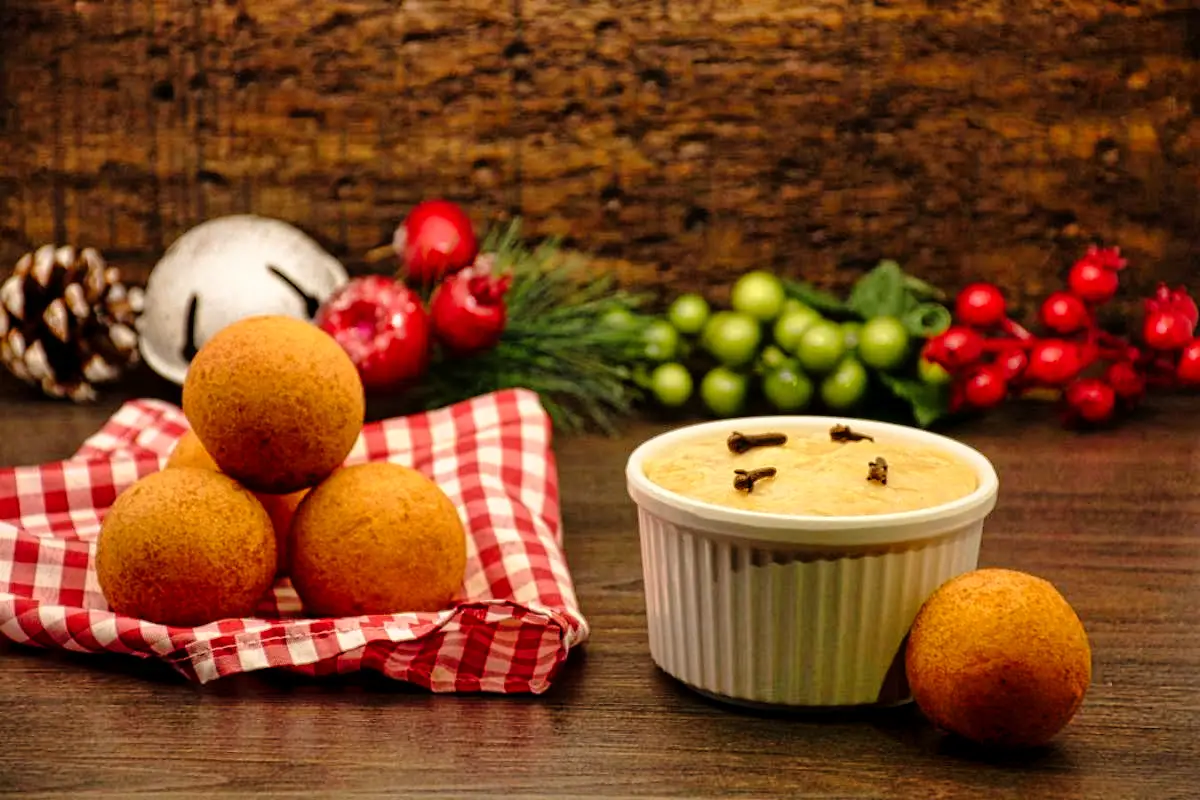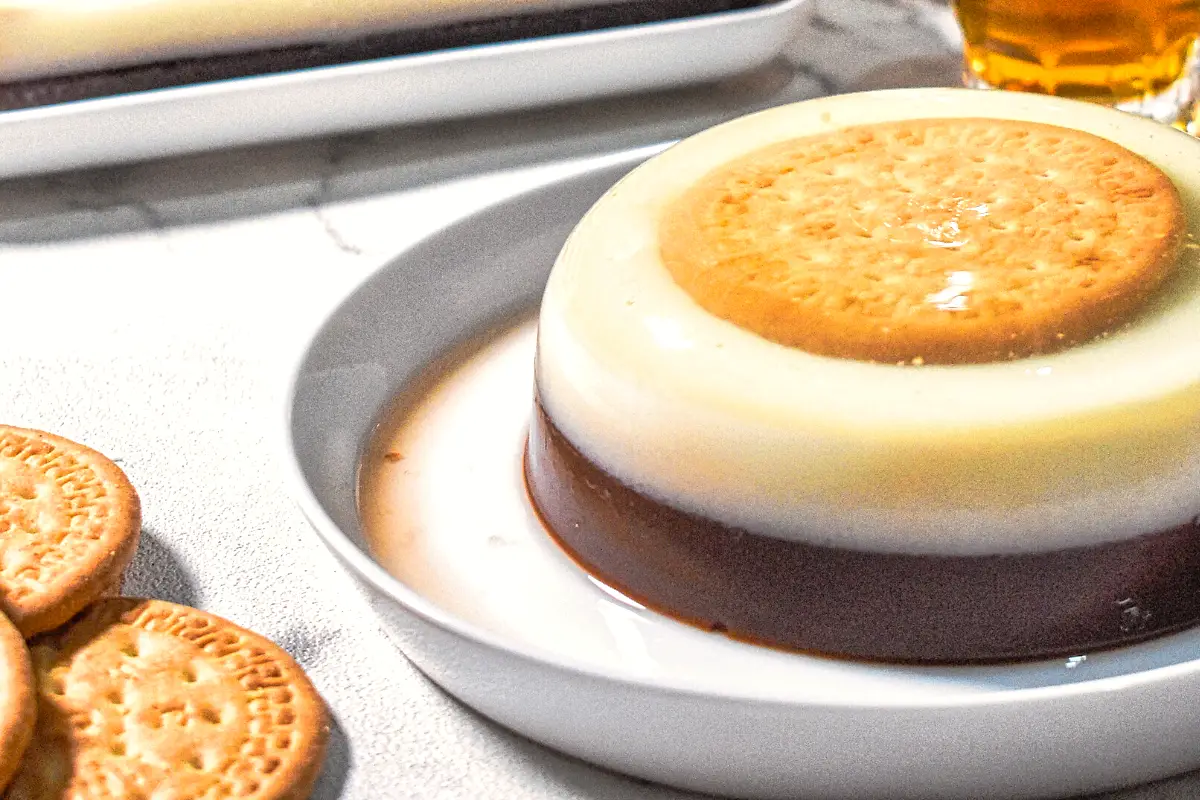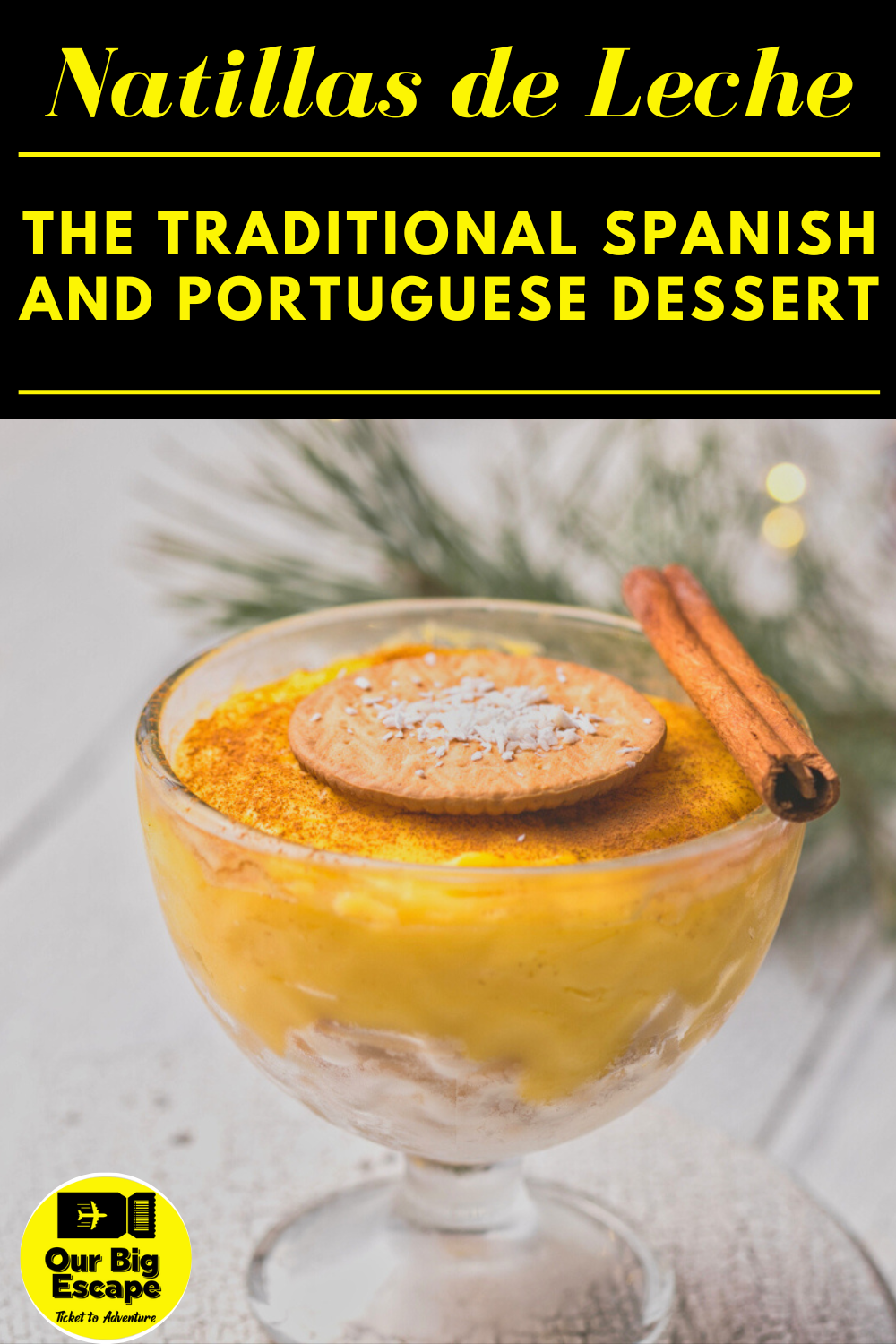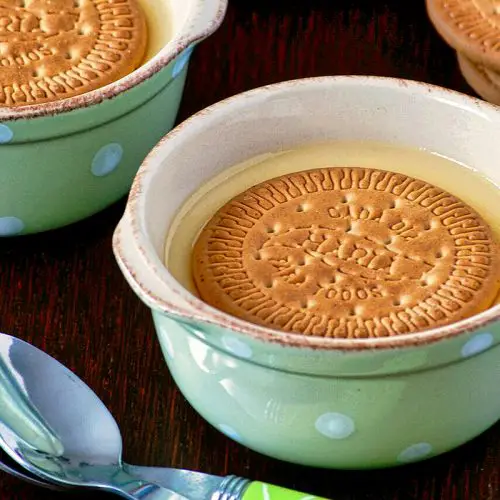Natillas (custard, in English) were prepared by nuns in convents all over Europe, though their etymology is a mystery. According to one popular theory, the dessert was created by a group of nuns.
Natillas, like flan, cuajada, and crema catalana, are comfort food in Spain, and no one knows for sure where they originated or how they got their name.
Want more ideas to round-out your Recipe Box?
A lot of great options are in these posts!
- 38 Easy Spanish Dishes & Spanish Desserts With Recipes
- 24 Authentic Spanish Recipes For Chorizo
- The 35 Best Spanish Recipes for Tapas Ever Created
Natillas are a basic dessert that can be made with this recipe. They are thick and creamy with a rich yellow color and have a vanilla flavor. Even though the dish is already infused with lemon and cinnamon flavor from the cooking process, a final touch of ground cinnamon before serving really brings out the flavor.
Chocolate and Turrón are two other well-liked Natillas flavors. Making the custard and chocolate biscuit cake known as Marie biscuits are the first thing I remember about Natillas de Leche. Many delicious desserts start with a homemade custard, either a thin or thick version.

What are Natillas or Natillas de Leche
One of the oldest and most well-known Spanish desserts is the natilla (possibly “custard,” also known as “Natillas de Leche”). Due to the similarity in ingredients, they have a similar consistency to flan. Traditional variations often include cinnamon, lemon, or vanilla in addition to the main ingredients of milk, egg yolks, and sugar.
Fresh cheese, caramel, chocolate, or even grated coconut are used in some regional preparations.
Quick and simple to make, Natillas de Leche is a crowd-pleaser. The custard is thickened with cornstarch and cooked for about 30 minutes. Natillas can be cooked in a number of different ways, but the most common methods involve using a slow cooker, a bain-marie, or even steaming.
In order to avoid the egg from curdling when combined with the hot milk, it is crucial to keep a close eye on the cooking temperature.
Once Natillas have come to room temperature, they are typically refrigerated for three to four hours before being eaten. However, they can also be eaten warm, just a few minutes after being served.
When I was younger, I mistakenly believed that all it took to make a Natillas de Leche was to pour some milk into an envelope and heat it up. The first time I made an authentic egg custard, I was blown away. It has the same delicious flavor.
Since trying this recipe, I have not restocked my home with this particular style of envelope and I advise you to do the same.
This humble dessert has a fascinating past; like most creams, we can probably trace its origins back to the Romans. During the Middle Ages, they were seen in numerous European monasteries and convents. One thing that can be said with certainty is that eggs and milk will be used.
These components produce a cream that is not sweet but has many culinary applications. The development of refined sugar, vanilla extract, and cinnamon heralded the arrival of a new era of sophistication, known as the Golden Age of Spices. From there, custard developed into the modern version used in French cooking.
For what have you never made provisions? So, why do you still seem to be hesitating? Regardless of the circumstances, I guarantee that this recipe will turn out, so give it a shot as soon as you can.

Marie Biscuits
Natillas are traditionally completed and decorated with Marie biscuits. By sitting atop the sweet, they absorb some of the sauce and become pleasantly mushy, complementing the dish wonderfully.
Besides the United States and Europe, these sugary cookies are widely consumed in India, Pakistan, South Africa, and Australia.
However, Peek Freans, a London-based firm that specializes in baking cookies, invented Marie biscuits in 1874. They were made to celebrate the marriage of Queen Victoria’s son, Alfred I of Saxe-Coburg and Gotha, to the Grand Duchess Maria Aleksandrovna of Russia.
During and after Spain’s Civil War, these cookies enjoyed widespread popularity. Due to a surplus in the wheat harvest, bakeries were able to mass-produce them, bringing the price down significantly and serving as a symbol of economic recovery.
Although traditionally they were round with the name engraved in the middle and full of small holes around the edges, the term is now used for any cookie with those characteristics. And now you can add rectangular cookies that look just like these to the mix! (except for the ones made with butter).

check out our video
How To Create Our Natillas de Leche Recipe
Ingredients:
-
- 6 cups whole milk, divided
- 1 lemon, zested
- 1 cinnamon stick
- 5 tablespoons cornstarch
- 8 large egg yolks
- 8 tablespoons confectioners’ sugar
- 1/2 teaspoon pure vanilla extract
- Ground cinnamon, for garnish
Instructions:
-
- Gather the ingredients.
- The milk should be poured into the large saucepan. Uncover the pot, bring the milk to a simmer, and add the lemon peel and cinnamon stick. Take off the stove and set aside to cool for ten minutes.
- Mix the cornstarch and the remaining 1 cup of milk in a small bowl.
- Get a big bowl and add the egg yolks to it. Stir in the sugar and whip with a hand or stand mixer until foamy.
- Combine the milk-cornstarch mixture and beat on low until combined. Put aside.
- Using a slotted spoon, skim the lemon peel and cinnamon stick out of the hot milk.
- Put the pot back onto the stove, but this time turn the heat down to medium. Add the vanilla extract once the milk is hot but not boiling.
- To make a custard, add the egg yolk mixture to the warm milk slowly while whisking with a hand mixer or electric mixer on low speed.
- Over medium heat, keep stirring with a wooden spoon to prevent the milk from scorching. Keep stirring until the liquid becomes thick.
- Remove any clumps from the thickened mixture by ladling it through a fine mesh sieve set over a large bowl.
- The custard should be strained through a fine metal sieve.
- Divide the strained Natillas mixture among six individual serving bowls, ramekins, or cups. Place on a counter to cool to room temperature, then cover ramekins with plastic wrap and place in the fridge.
- A dash of cinnamon on top before serving will make the dish even more delicious.
Why Did People Stop Creating Natillas de Leche
When did we decide to stop churning out custard? Why is it getting harder to find one of the desserts that symbolized our childhoods? Yes, I am aware that they are still being prepared in some homes, that some restaurants still offer them, and that there are factory-made versions available in the supermarket, but those days are long gone.
Flan has made a significant comeback, while custard remains relegated to the dusty drawer of forgotten desserts.
In order to prove that its luscious creaminess is not an illusion, we compared four different recipes: three from Michelin-starred chefs and one from a less-famous cook.
The chefs Abraham Garca, Simone Ortega, the Torres brothers, and Isabel Pantoja square off in today’s cooking competition (you may not remember, but the singer had a restaurant and published a cookbook).
Natillas the Delicious Spanish and Portuguese Dessert
Equipment
- Large Skillet
- bowls
- Slotted Spoon
- Fine Metal Sieve
Ingredients
- 6 Cups Whole Milk Divided
- 1 Lemon Zested
- 1 Cinnamon Stick
- 5 Tbsp Corn Starch
- 8 large Egg Yolks
- 8 Tbsp Confectioners Sugar
- ½ tsp Pure Vanilla Extract
- Ground Cinnamon for garnish
Instructions
- Gather the ingredients
- The milk should be poured into the large saucepan. Uncover the pot, bring the milk to a simmer, and add the lemon peel and cinnamon stick. Take off the stove and set aside to cool for ten minutes.
- Mix the cornstarch and the remaining 1 cup of milk in a small bowl.
- Get a big bowl and add the egg yolks to it. Stir in the sugar and whip with a hand or stand mixer until foamy.
- Combine the milk-cornstarch mixture and beat on low until combined. Put aside.
- Using a slotted spoon, skim the lemon peel and cinnamon stick out of the hot milk.
- Put the pot back onto the stove, but this time turn the heat down to medium. Add the vanilla extract once the milk is hot but not boiling.
- To make a custard, add the egg yolk mixture to the warm milk slowly while whisking with a hand mixer or electric mixer on low speed.
- Over medium heat, keep stirring with a wooden spoon to prevent the milk from scorching. Keep stirring until the liquid becomes thick.
- Remove any clumps from the thickened mixture by ladling it through a fine mesh sieve set over a large bowl.
- The custard should be strained through a fine metal sieve.
- Divide the strained Natillas mixture among six individual serving bowls, ramekins, or cups. Place on a counter to cool to room temperature, then cover ramekins with plastic wrap and place in the fridge.
- A dash of cinnamon on top before serving will make the dish even more delicious.
Video
You May Want to Join Our Boondocking Group on Facebook For More Information
You May Want to Join Our Campfire Recipes Group on Facebook For More Information


